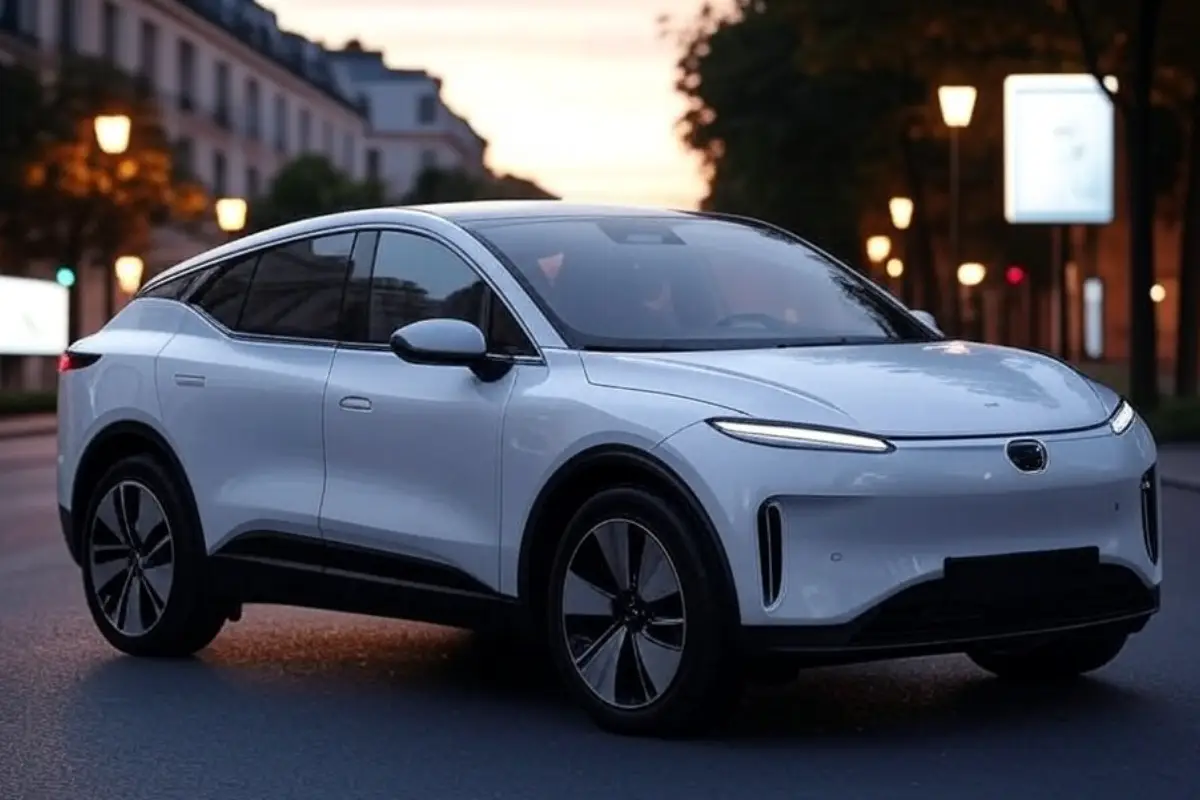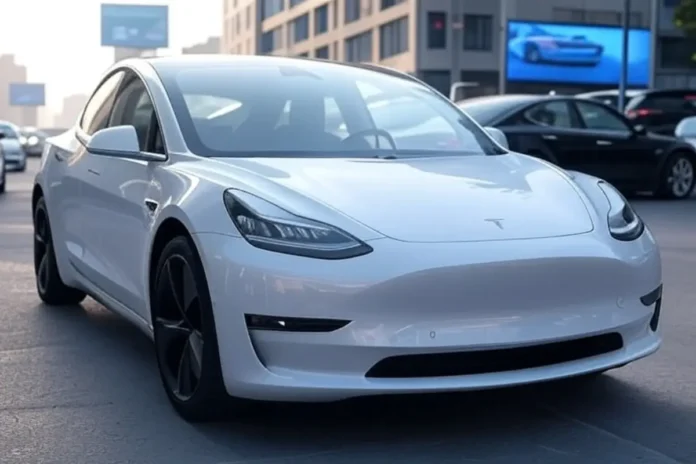Introduction to Electric Mobility
Electric mobility represents a transformative shift in transportation, emphasizing the transition from traditional internal combustion engines to more sustainable electric vehicles (EVs). This shift is not merely a technological upgrade; it encompasses a broader vision for the future that aims to reduce carbon footprints and enhance urban living standards. In today’s environment, the significance of electric mobility goes beyond its ecological advantages; it also reflects a necessary response to the pressing challenges of climate change and resource depletion.
The concept of electric mobility involves the integration of electric vehicles into various modes of transport, including personal cars, public transit, and shared mobility platforms. This evolution is driven by several factors, including advances in battery technologies, growing awareness of environmental issues, and governmental policies favoring clean energy solutions. As we approach 2025, insights into these developments show that electric mobility could redefine how we view transportation by curbing greenhouse gas emissions, improving air quality, and fostering energy independence.
Innovative companies like Commafast play a crucial role in this ongoing revolution. By investing in the research and development of electric vehicles, Commafast is at the forefront of engineering more efficient, sustainable, and user-friendly transportation solutions. They are committed to expanding the infrastructure necessary for widespread adoption, including charging stations and smart grid technologies. As we explore the future of electric mobility, it becomes increasingly evident that these advancements are not just beneficial but essential for constructing resilient cities and sustainable economies, culminating in a cleaner and greener world for generations to come.
The Role of Commafast in Electric Mobility
As the global shift towards electric mobility accelerates, companies such as Commafast play a pivotal role in shaping this transformative landscape. With its innovative portfolio, Commafast focuses on enhancing the electric vehicle (EV) ecosystem through advanced charging infrastructure, cutting-edge battery technology, and comprehensive software solutions tailored for electric vehicles. These contributions are vital for the widespread adoption of electric mobility by addressing key challenges, including range anxiety and charging availability.
One of the primary elements of Commafast’s strategy includes the development of efficient and accessible charging stations. These stations are designed to reduce wait times and improve overall user experience, making it easier for consumers to transition from conventional vehicles to electric alternatives. By 2025, Commafast aims to expand its network significantly, ensuring that the necessary infrastructure is in place to support the growing number of electric vehicles on the road.
In addition to charging solutions, Commafast is at the forefront of battery technology innovation. The company invests heavily in research and development to create batteries that offer longer life spans, faster charging capabilities, and enhanced safety features. These advancements not only empower electric vehicle manufacturers but also improve the overall performance and appeal of electric cars to potential buyers.
Moreover, Commafast collaborates with various stakeholders, including automakers, government bodies, and technology firms, to foster a robust electric mobility ecosystem. These partnerships enhance its research efforts and allow the company to stay ahead of market trends, ensuring that it meets the evolving demands of consumers. By bridging the gap between technological development and consumer needs, Commafast positions itself as a leader in the electric mobility sector.

Challenges Facing the Electric Mobility Sector
The electric mobility sector is at a critical crossroads, confronting several challenges that hinder its growth and widespread acceptance. One of the primary technological hurdles is the advancement of battery technology. Current battery systems often struggle with issues related to energy density, charging times, and lifespan, making electric vehicles (EVs) less attractive to potential consumers compared to traditional combustion engine vehicles. Addressing these technological issues is vital for ensuring that electric mobility can compete effectively by offering practical solutions such as lower costs and increased convenience.
Infrastructure limitations also present significant barriers to the adoption of electric mobility. The lack of extensive and accessible charging networks contributes to ‘range anxiety,’ where potential users fear that they will deplete their vehicle’s charge before reaching a charging station. Expanding the charging infrastructure is imperative to bolster consumer confidence in making the switch from conventional vehicles to electric alternatives. Companies like Commafast are actively working on partnerships aimed at creating a robust network of fast-charging stations to facilitate this transition.
Regulatory issues further compound the difficulties faced by the electric mobility sector. Different regions have varying regulations and incentives related to electric vehicles, which can create confusion and inconsistency for consumers and manufacturers alike. Additionally, outdated regulations may stymie innovation and slow down the adoption of new technologies aimed at enhancing electric mobility. In response, Commafast is collaborating with policymakers to advocate for favorable regulations that support the growth and development of the sector.
Consumer perceptions remain another significant challenge. Many potential electric vehicle buyers harbor misconceptions regarding the capabilities, reliability, and overall value of electric mobility. Education and awareness campaigns are essential to dispel these myths and inform consumers about the benefits and advancements in this field. Commafast is focused on communicating effectively with consumers to enhance understanding and drive interest in electric vehicles, ultimately positioning itself as a leader in the evolving landscape of electric mobility.
Looking Ahead: The Future of Electric Mobility
The future of electric mobility appears poised for transformative change as advancements in technology, infrastructure, and consumer acceptance converge. As we approach 2025, several trends indicate a significant acceleration in the adoption of electric vehicles (EVs) powered by innovations from companies such as Commafast. Electric mobility is no longer just an environmentally friendly alternative; it is becoming mainstream in urban planning and transportation paradigms.
One of the most promising developments is in the realm of autonomous electric vehicles. Technology currently in trials is set to revolutionize how individuals commute and transport goods. By leveraging artificial intelligence and machine learning, autonomous systems will enhance safety and efficiency, thus contributing to the shift towards electric mobility. Notable players in the industry, including Commafast, are actively working on integrating autonomous features into their vehicle offerings, with an eye toward creating safer, smarter transportation options that align with the demands of modern urban living.
In parallel, advancements in charging technology are crucial for overcoming range anxiety, which has historically hampered the uptake of electric mobility. Initiatives are underway to improve the speed and accessibility of charging stations, with fast-charging networks anticipated to become ubiquitous in urban and rural settings alike. Commafast envisions a future where electric vehicle owners will have seamless access to charging facilities, thereby further promoting the transition to electric vehicles.
Moreover, policy frameworks and government incentives are expected to evolve, offering additional support for the adoption of electric mobility. As cities commit to reducing their carbon footprints, strategies that favor electric vehicles, including tax breaks and investment in charging infrastructure, will become common. Commafast aims to align itself with these future policies, contributing to a sustainable landscape where electric mobility becomes a standard rather than an exception.
In conclusion, the advancements in autonomous technology, charging infrastructure, and supportive policies collectively paint a promising picture for electric mobility. Commafast’s commitment to innovation and sustainability will play a critical role in shaping this future, ensuring that electric mobility thrives as a vital component of the transportation ecosystem beyond 2025.




